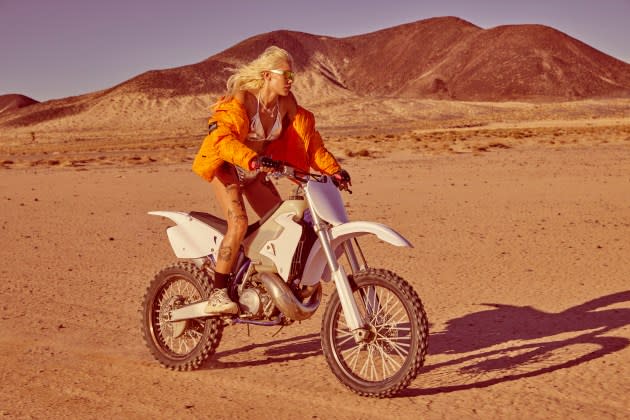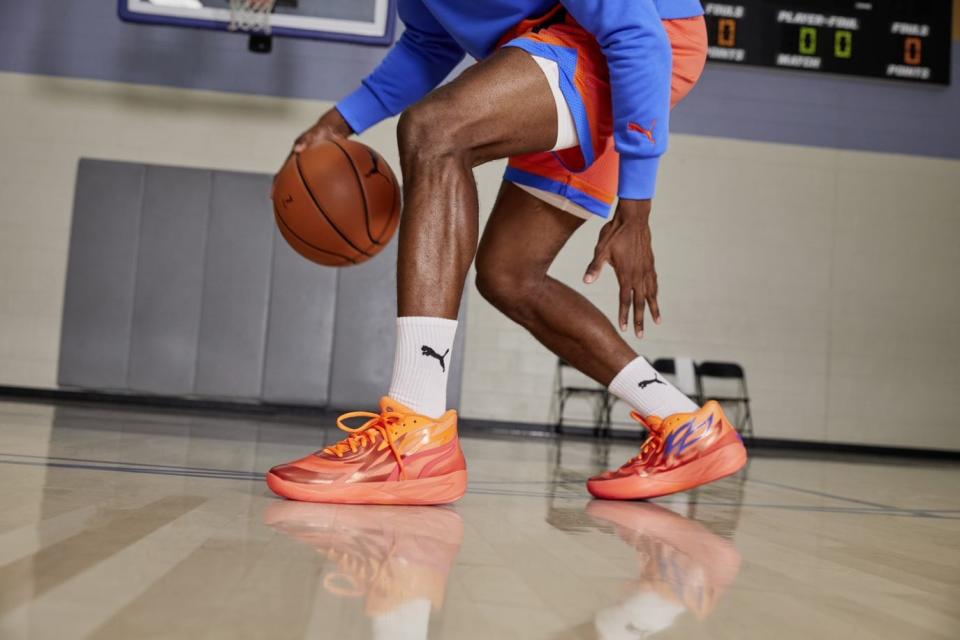As Growth Slows, Puma Calls 2023 a ‘Transitional Year’

Updated 2:30 p.m. EST
BERLIN — Changes and challenges seem to be what 2023 is made of for German sportswear brand Puma, with executives at the company conceding there may be difficult roads ahead.
More from WWD
Puma, Swarovski Debut Crystal-dotted Anniversary Sneakers, Hoodie
Fashion Brands Are Tapping Into New Markets Through Sports Partnerships
“This will be a transitional year from multiple perspectives,” the brand’s chief executive officer Arne Freundt told journalists at a press conference for its third-quarter results on Tuesday.
Puma’s third-quarter sales rose 6 percent year-on-year to 2.31 billion euros in currency adjusted terms. But at reported rates, sales in the three-month period were 1.8 percent lower, with Puma blaming the stronger euro for the slight decrease.
Coupled with a market environment where there is “too much inventory in the market and too much promotion overall,” the brand is looking at “further elevating the brand, winning in China, winning in the U.S.” to reach its goals, said the executive.
Puma’s third-quarter results were slightly ahead of market expectations. In the first nine months, Puma saw growth of 10.6 percent in currency adjusted terms, and revenues of 6.62 billion euros.
The sportswear brand did most of its business in Europe, the Middle East and Africa, where sales rose 9.9 percent on a currency adjusted basis to just over 1 billion euros.
In Puma’s home market of Europe, business was flat, with a decrease of 1.4 percent in currency adjusted terms. “There was strong momentum elsewhere,” Freundt noted, including in Turkey, South Africa, the Middle East and Ukraine.
In the Americas, third-quarter revenues rose 2.5 percent, in currency adjusted terms, to 854.6 million euros. Breaking the numbers down further, sales in Latin America rose 35.2 percent, but fell 12.4 percent in North America.
Sales in the U.S. have dragged since the beginning of the year, decreasing by 16 percent altogether, in currency adjusted terms, over the first nine months of 2023.
According to Freundt, Puma’s course correction in North America will take some time. “When we look at the U.S., we need to recognize that there’s a softness in the market and that less units are being sold than the prior year,” he conceded. The sportswear brand had previously been too dependent on the off-price segment, he suggested, which was not in line with current strategies. “So we’ve seen a certain decline there,” he conceded.
But Freundt believes Puma “can come back to growth [there] during the course of the year in 2024.”
The company is focused on increasing brand heat in the U.S. and believes that investments into “triple A ambassadors” will help. These include the likes of pop star Rihanna, high profile basketballer LaMelo Ball and, most recently, musician A$AP Rocky, who was named creative director of Puma’s F1 collaboration this week.

“Brand positioning is determined by consistent behavior over time, so it does take time to change consumer perceptions of the brand,” Freundt said.
In Asia Pacific, Puma’s revenues rose 4.6 percent in currencyadjusted terms to 435.9 million euros. This reflected the ongoing recovery in China, as well as new growth in strategic markets, Japan and India, the company noted.
Sales in Greater China fell by double digits last year because the country was still locked down under COVID-19 restrictions. Things were gradually improving there though, Freundt said, and Puma saw year-on-year growth of 8.6 percent, currency adjusted, in Greater China in the third quarter.
Puma was also back to signing brand ambassadors in China. But everything was moving more slowly than expected, the Puma executive explained: “We also see that GDP [gross domestic product] development is lagging behind expectations, so consumption isn’t coming back at the speed we had hoped for.”
On the positive side, Freundt noted that his company had not been as reliant on sales in China as competitors like Adidas, so the slower recovery wasn’t hurting them quite as much. It also meant the brand had room to grow there, he noted.
In terms of product categories, Puma footwear grew 11.3 percent in currency adjusted terms to bring in 1.22 billion euros. Apparel sales decreased by half a percent to 794.6 million euros and accessories dropped 4.2 percent to bring in 301.6 million euros over the third quarter.
Puma’s operating profit also fell during the third quarter, decreasing 8.3 percent to 236.3 million euros.
Quarter-on-quarter sales momentum is slowing. In the first quarter of the year, the brand saw 14.4 percent growth. In the second, it saw 11.1 percent growth.
Freundt cautioned against reading too much into that, suggesting year-on-year comparisons as a better reflection of business. “There are just so many factors distorting the picture,” he insisted, such as currently worsening market volatility. “Geopolitical risks are currently increasing. We are all very concerned looking at developments in the Middle East,” he said.
The war in Ukraine, persistent inflation, macro-economic headwinds, currency volatility and the risk of recession weighing on consumer sentiment were other factors Puma listed as challenges.
But Freudt said he was not complaining: “It’s the same situation for everybody in the market and we just need to focus on doing better than the competition.”
In first reactions, market analysts from the likes of Deutsche Bank, Jefferies and the Royal Bank of Canada welcomed Puma’s slightly-better-than-expected results, noting that, despite all the challenges, the company had already done a lot to resolve issues like high inventory. Volker Bosse, head of equity research at Baader Bank, also noted Puma was still outgrowing its much larger hometown competitor, Adidas.
On the back of the Q3 results, Puma re-confirmed its guidance for the year. The German brand still expects to see currency adjusted sales growth land in the high single-digit percentage range for the full year, as originally forecast. In 2022, Puma saw around 8.46 billion euros in sales.
Best of WWD


